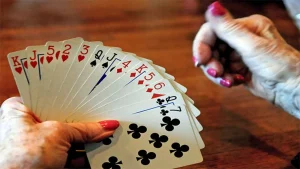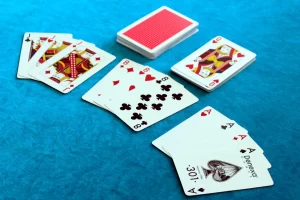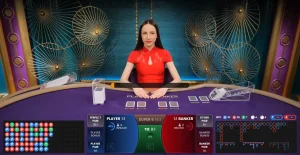The Future of Rummy: How Blockchain and NFTs Are Shuffling the Deck
4 min read
The familiar clatter of tiles, the thrill of a perfect sequence, the groan of a missed declaration—rummy is a game steeped in tradition. But honestly, the digital version we play today is due for a serious upgrade. The core is fun, sure. But it often lacks true ownership, provable fairness, and that tangible sense of a hard-earned collection.
Well, that’s all about to change. Enter blockchain and NFTs. These aren’t just buzzwords for crypto-bros; they’re the building blocks for a new, more secure, and frankly, more exciting era for online card games. Let’s dive in.
Beyond the Screen: Owning Your Digital Cards
Right now, when you play rummy online, you don’t own anything. Those digital cards in your hand? They’re just pixels licensed to you by the platform. When you log out, they’re gone. It’s like renting a movie instead of buying a cherished book for your shelf.
Blockchain flips this script. Imagine each card, each avatar, or even each unique card back isn’t just data on a company’s server. It’s a Non-Fungible Token (NFT)—a unique digital asset that you truly own, stored securely on a decentralized ledger.
What does that mean for you?
- True Digital Ownership: That limited-edition tournament card you won? It’s yours. Forever. No company can take it away.
- A Player-Driven Economy: You could trade, sell, or loan your card NFTs on open marketplaces. A rare card from a major tournament could become a valuable digital collectible.
- Interoperability Potential: This is the really wild part. Imagine a card or item you earn in one rummy game being usable in another, completely different platform. Your collection becomes a passport.
Trust, Transformed: The End of “Is This Game Rigged?”
Here’s a common pain point: the nagging doubt about fairness. How do you know the card shuffle is random? How can you be sure the game isn’t stacked against you?
Blockchain introduces something called provable fairness. The entire game logic—the shuffle, the card distribution—can be recorded on the blockchain as a transparent and unchangeable transaction. You could, in theory, audit the game afterward to verify its integrity. It’s like having a glass-walled dealing room in a casino. Everyone can see the process is legit.
This builds a level of trust that’s simply impossible with traditional, closed-source systems. The house’s edge becomes a known, verifiable quantity, not a black box of suspicion.
Smart Contracts: The Automated Dealer
This is where it gets really slick. Smart contracts are self-executing contracts with the terms of the agreement written directly into code. In rummy, they could automate everything.
Tournament entry fees? Held securely in a smart contract until the winner is declared. Prizes? Distributed instantly and automatically the moment the final score is verified. No more waiting for manual processing. No potential for human error or manipulation. The code is the law, and it pays out flawlessly.
A Glimpse into the New Rummy Metaverse
So, what might this actually look like for a player? Let’s paint a picture.
| Traditional Rummy | Blockchain & NFT Rummy |
| Generic, non-owned cards | Unique, tradable card NFTs with varying rarities |
| Closed, opaque RNG system | Provably fair shuffles on the blockchain |
| Platform-specific rewards | Truly owned assets you can take anywhere |
| Manual or delayed prize distribution | Instant payouts via smart contracts |
| Limited player identity | On-chain reputation and history |
You might start by buying a “starter pack” of common card NFTs. As you play and win, you earn rarer cards or cosmetic items. Maybe you win a tournament and get a one-of-a-kind “Champion’s Joker” NFT. You could use it to intimidate opponents, or you could sell it for a real profit on a secondary market. Your call.
Your player profile isn’t just a username. It’s a verifiable record of your entire playing history—your wins, your signature moves, your earned trophies. This becomes your reputation, your proof of skill.
Not So Fast: The Hurdles on the Felt
This future isn’t without its challenges, of course. The technology can be intimidating for the average user. “Gas fees” (transaction costs on some blockchains) could make small, casual games feel expensive. And let’s be real, the regulatory environment for crypto and gaming is… a tangled mess, to put it mildly.
Adoption is the biggest one. For this to work, you need a critical mass of players and developers to agree on standards. It’s a bit of a chicken-and-egg situation.
The Final Card: A More Player-Centric Game
The integration of blockchain and NFTs in rummy isn’t about replacing the soul of the game. It’s about enhancing it. It’s about giving players back control, ownership, and verifiable trust.
We’re moving from a world where we simply play on a platform to one where we can truly invest in and build our own gaming legacy. The cards are being reshuffled. And this time, you get to keep the deck.







